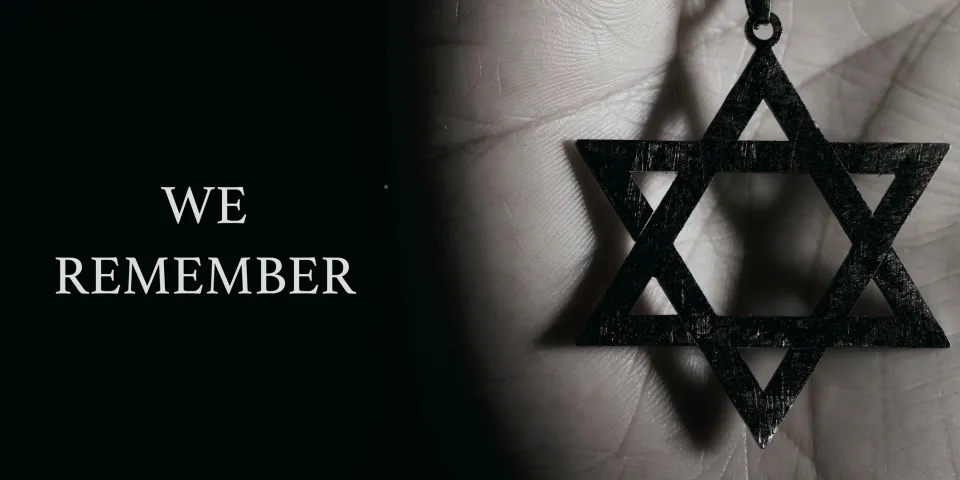Latest 
 Career Development Denise Alexander
Career Development Denise Alexander
Recent Blog Posts


It is often said that those who ignore the mistakes of the past are doomed to repeat them.
Hopefully, the memory of an era of intentional discrimination and persecution of specific groups of individuals remains a prominent learning point of our history and something we all work on every day to ensure never happens again. It was the reality for millions of people during World War II. During the war, the Nazis systematically murdered millions of innocent people by conducting a wide variety of atrocities. Persons of color, Catholic clergymen, Jehovah's Witnesses, Freemasons, people of Slavic origin, communists, Romani people, homosexuals and the physically and mentally disabled were all among the prime targets of the Nazis. However, six million of these people who were especially targeted, abused and killed were Jews.
Few topics evoke as much emotion or horrific memories as the Holocaust. In her latest T.R.U.E. Talk with Terri, “Day of Remembrance,” Diversity, Equity and Inclusion expert Terri Howard focused on the Holocaust and why we should never forget this horrific event. She invited Ed Davidson to contribute to this conversation. Davidson and his wife were part of this history and their families were directly impacted by the Holocaust. The T.R.U.E. series provides an opportunity to understand different types of diversity, to ask questions and take the time to understand everyone’s unique and impactful cultural and historical backgrounds.
When they came to power in Germany, the Nazis did not immediately start to carry out the mass murder of Jews, but that does not mean there was not extreme discrimination occurring. In the first six years of Adolf Hitler’s dictatorship, Jews felt the effects of more than 400 decrees and regulations which gradually stripped them of their rights as citizens. By first “othering” them by purposefully segregating them from normal society and stripping them of their ownership and property rights by placing them in ghettos, the Nazis were able to gradually radicalize their persecution.
After June 1941, their radicalization culminated in a plan the Nazi leaders referred to as the “final solution.” The final solution was a euphemism for the mass murder of millions of Jews. This signaled the shift in the Nazis' policies to remove Jews from Europe by transitioning from efforts to relocate them to plans for their outright annihilation. Their depraved goal was to kill 11 million Jews.
The first concentration camp was built in a village near Munich, Germany in 1933 called Dachau. Nazi leaders established three killing centers in Poland—Belzec, Sobibor, and Treblinka, and more camps would follow. Tragically, this regime implemented the genocide from 1941 until 1945 when the camps were liberated by allied forces. The estimated total number of nonmilitary dead during World War II in Europe ranged as high as 15 to 20 million people. “To put that in perspective,” Davidson explained, “that's roughly equivalent to every man woman and child in Wisconsin, Michigan and Indiana.”
A common misconception is that the 44,000 camps and other incarceration sites were all the same. It is dangerous to assume that all places would participate in the same type of extermination and torture since it could mitigate or delegitimize the horrors and trauma that prisoners of these camps experienced. While some people may understand the clear differences between a prisoner of war camp, a ghetto and a transit camp, many people do not understand the differences between various concentration camps.
The purpose of concentration camps was:
“There were different kinds of concentration camps,” said Davidson. “But broadly they can be broken down to labor camps and extermination camps.”
Labor camps housed people in appalling conditions who were worked usually to death as slaves. Not only were they given insufficient rest, but there were severe shortages of food, clothing, equipment and medicine. Many people died in labor camps mostly from starvation, but some were executed, while others died as a result of medical experiments carried out against them, such as the notorious and horrific experiments conducted by Josef Mengele.
Extermination camps were established and operated for the sole purpose of wholesale slaughter and are generally what we think of when we hear about concentration camps. Auschwitz is the most infamous of these types of concentration camps. Not everyone who arrived at the extermination camps was murdered on arrival. Some were selected for various work tasks to help the camp operations run smoothly such as sorting and processing the possessions, administrative work and heavy manual labor. However, being selected to work didn’t mean mercy. The majority of those selected for any kind of work within this type of camp would die within weeks or months of their arrival from lack of food, disease or overwork. Those that survived the initial atrocities of life within the camps were often eventually killed and replaced with new arrivals.
While the end goal was the death of millions of innocent victims, the experiences of these victims were not the same.
“History is not there for us to like or dislike. History is there for us to learn from, and if it offends us, even better because we are then less likely to repeat it!” Davidson concluded, “History is not ours to erase.”
We have to ensure that such atrocities and discrimination like that of the Holocaust don’t happen again. Some form of justice was served to many of the criminals who participated in the mass murder of millions, but that did not ease the pain or damage that had already been done. Any punishment or justice served for this level of genocide does not feel like justice.
“My father served as an interpreter for the Nuremberg trials, which tried Nazi war criminals for their crimes, but that wasn’t our only tie to the Holocaust. My dad lost all his family except for his sister and her family since she managed to bring them to the United States. The remainder of his family were murdered by the Nazis” said Davidson.
In the aftermath of the Holocaust, the world has struggled to come to terms with the horrors of the genocide, maintain the memories of its victims and those who survived, or properly hold the perpetrators responsible. These important efforts remain ongoing and people should continue to strive to learn about history, be disturbed by it and vow not to repeat it.
The United Nations (UN) assembly designated January 27 as International Holocaust Remembrance Day. On this annual day of commemoration, the UN urges every member state to honor the six million Jewish victims of the Holocaust and the millions of other victims of Nazism to help prevent future genocide.
Whether you work in healthcare, are a business or IT professional, or are a full-time student or homemaker, you should take every day as an opportunity for remembrance by ensuring what you do creates a future that is more hopeful, more diverse and more accepting than our past.
BLS pay estimates calculate the median annual wage for various occupations. Per the BLS the median wage for an occupation is: "The wage at which half of the workers in the occupation earned more than that amount, and half earned less. Median wage data are from the BLS Occupational Employment and Wage Statistics survey." Bureau of Labor Statistics (BLS), U.S. Department of Labor, Occupational Outlook Handbook 2024. BLS median wage estimates do not represent entry-level wages and/or salaries. Multiple factors, including prior experience, age, geographic market in which you want to work, and degree level and field, will affect career outcomes, including starting salary and earnings as an experienced employee. Herzing neither represents that its graduates will earn the median salaries calculated by BLS for a particular job nor guarantees that graduation from its program will result in a job, promotion, particular wage or salary, or other career growth.
Get the latest news you need to know, from study hacks to interview tips to career advancement. Have it delivered right to your inbox biweekly.